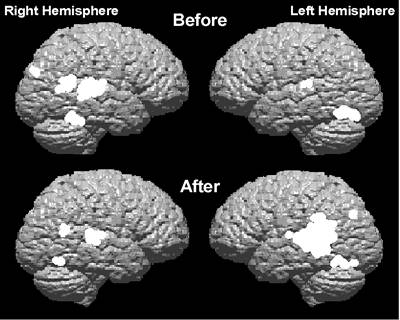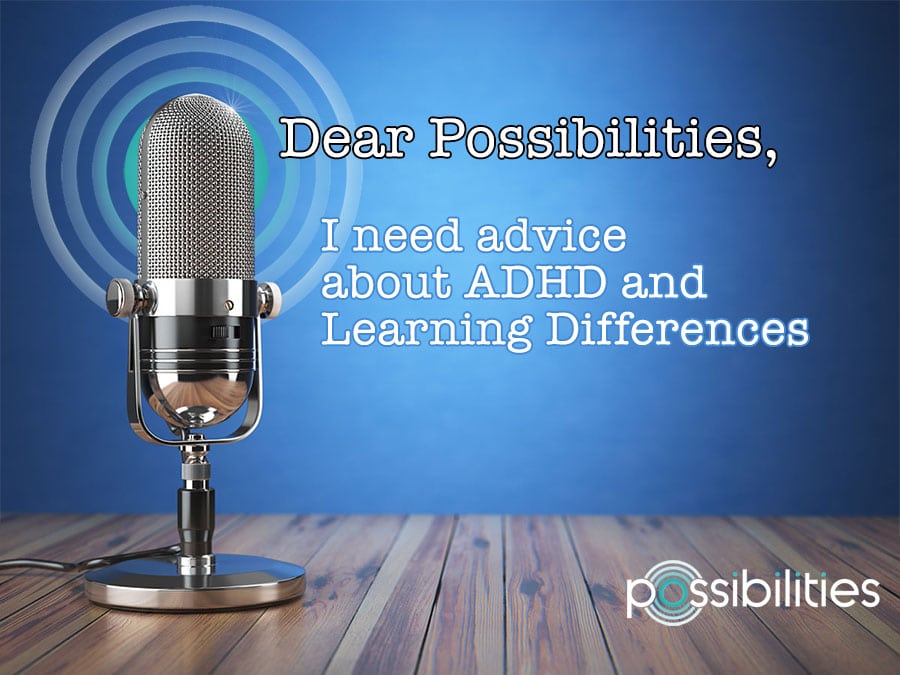
Dear Possibilities,
My son is going into Grade 4 and struggles to read. I’ve worked hard to get him extra help, and his teachers have been really understanding. Right now he has some accommodations, like extra time to do his work. Sometimes he uses a computer for homework which helps.
At the end of Grade 2 he was having a hard time sounding out words. So I got him a tutor and we haven’t stopped. He’s been seeing his tutor every week for over a year now. But my son’s reading hasn’t improved much and he’s getting more and more frustrated. The school wants to add modifications to the accommodations. Is this the next best step? What more I can do to help my son read?
Signed,
Searching for Solutions
Dear Searching,
These are great questions—and worth spending some time on! Of course we could start with a general definition of accommodations and modifications, but that sounds rather dull for us and for you. And if we start and end with definitions, we’ll probably fail to address the most important information—like the real implications of accommodations and modifications for your child’s learning in the long-run. So let’s start with a story, then swing back and offer some advice.
Imagine you are standing in front of your messiest, most jam-packed closet. For the sake of this story, let’s imagine it’s a closet in your master bedroom. There are shoes, lots and lots of shoes. There are pants—again lots and lots of them—and they range in style and size, because you remain fully committed to those pants that were three seasons back and four sizes ago. Oh, and there are dresses, too—many of them—from the flouncy maxi (because who doesn’t want to look like Jessica Biel on a Hampton vacation?) to your tailored sleeveless offerings (because Michelle Obama’s right to bare arms holds equal appeal). Of course you have to buy more blouses—because it’s COVID—and how can you nail a ZOOM meeting if you don’t look zesty with some item you saw on Fallon Carrington in Dynasty 2.0? And yes, it’s now possible to nail your best, small-screen look because your most fashionable friend told you about an amazing website called WornOnTV.net that she stumbled on five years ago but shared with you only last month. True story, true website, and I’ve forgiven her for withholding.
Okay, so now you have a problem. You’re expecting a lot from your closet. And it’s doing its absolute best. But standing at the threshold and asking it to “try harder” just isn’t working. So you say, “okay, time for some adjustments.” So you start with some basic work-arounds to accommodate all of the stuff you have while keeping your closet just as it is. You take shoes out of boxes. You layer blouses on single hangers. You fold pants and stack them as high as you can. These adjustments work for a while, but eventually the Leaning Tower of Pants comes crashing down, you wear the same espadrilles with every outfit because you can’t be bothered to search through a mass of shoes, and you forget about that fabulous Dynasty blouse because it’s now buried on a hanger under three boatnecks you picked up from Winners while in your Meghan Markle phase.
Next solution? Subtraction! You start filling bags for your local Goodwill. This is a wonderful strategy—helping others while saving the earth from fashions destined for landfill. With fewer items to hold, you have modified your wardrobe significantly. Now you are expecting less from your closet, and your closet is breathing easier. It has just what it can handle—without changing at all—and it copes fairly well, at least for a while. But as time goes by and TV styles change, your clothes, and expectations of your closet to handle them, pile up again. You might even feel regretful about some pieces you parted with, but you gave them the boot making reboot impossible.
Don’t despair! There is another solution here: a more radical change of your closet’s architecture! So you hire Contractor 1 who makes big promises with a fairly straight-forward and speedy solution. You take a chance, you pay him well, you part ways. But the metal rod he’s hammered through the middle of the closet feels flimsy in the long-run. Sure, it holds more clothes, but it doesn’t deliver on the big change and big promises you were expecting. Now what? Time for a new contractor? A more radical approach? Absolutely!
Your next contractor, Contractor 2, pushes through the clothing, makes a fist and knocks on the back wall. “You know,” she says, listening to the sweet hollow sound. “There’s lots of space behind this wall. It’s going to take work, but let’s break down this barrier and open things up. This closet is capable of more!” So you say yes and your closet grows. Accommodations are still in place, but they work much more effectively. Your shoes are still without boxes, but now they hang in tiny compartments where you can access them easily. You still exercise a few subtractions where necessary—making them more like accommodations, really—but nothing radical that leaves your closet less than responsible for doing its job. And, overall, you recognize that a fundamental change in your closet’s architecture—that opens up a whole new side that wasn’t working for you—has made a huge and wonderful difference.
Whew! Now what does a closet have to do with your question? Your child is struggling to read. The school is offering accommodations. Accommodations can be wonderful things. They are the work-arounds—the things you do to work around anything that is limiting progress. No room for shoes? Remove them from their boxes. Struggling to read? Listen to books with text-to-speech software. Struggling to process information? Provide extra time for test-taking. Our experts at Possibilities support accommodations for our clients. Individuals with Dyslexia, Learning Disabilities, ADD or ADHD use accommodations to work more effectively at home, school and work. But accommodations don’t ask a closet, or a student, to change fundamentally. Challenges are acknowledged and worked around.
The school is now suggesting modifications—along with accommodations—because your child is having significant difficulty with grade-level work. Modifications are typically subtractive. Remember subtracting clothes when your closet was struggling with ever-expanding demands? In schools, modifications are usually subtractive—with major take-aways of grade-level work from your child’s curriculum because of struggles keeping up. In essence, the grade-level of expected work is lowered. So if your child is in Grade 4, the school might suggest Grade 3 work for Reading and Writing. Sometimes modifications are necessary. For any of us, we give up quickly, and mental health can suffer, if the gap between what we can do and what we’re expected to do is too big. Modifications can also mean extra practice with earlier, foundational concepts. But expecting too little can be problematic too, especially if we know our brains are smart and capable but work is being simplified more than it needs to be. If too little is expected of us—and of our closets or brains—then big change probably won’t happen.
It can be tough for you—and the school—to make decisions around modifications. You want to consider your options carefully. Before subtracting radically, see if accommodations can be used more fully to support grade-level work. Can you child understand books better if computers are available for listening to stories rather than reading them? If accommodations are maxed and your child can accomplish grade-level goals, then modifications probably aren’t necessary. In the fabulous book, Thinking Differently: An Inspiring Guide for Parents of Children with Learning Disabilities, David Flink describes moving through school with severe Dyslexia and ADHD. Bright and motivated, David used all kinds of accommodations to achieve grade-level work. He graduated from university, wrote a book, and developed an impressive charitable program supporting students with Learning Differences. What can we learn from David? Before you lower the bar with modifications, raise accommodations to address challenges and support grade-level skills.
Now remember the contractor who came in and knocked out the wall? It’s entirely possible to change the architecture of a closet. And it’s entirely possible to change the architecture of your child’s brain, too, especially when it comes to reading! Young brains are blessed with tremendous neuroplasticity; with the right input they are capable of remarkable change. But remarkable change needs intensive, evidence-based intervention. Contractor 2 said, “It’s going to take work, but let’s break down this barrier and open things up. This closet is capable of more!” Insert the word “brain” where you read the word “closet” and you get the idea. The brain is capable of more when it’s appropriately challenged and its architecture changed. Here is some brain science you need to know.
Students who struggle to read in Grade 2, and in later grades, may have a Learning Disability that affects how they sound out words. This particular Learning Disability is called Dyslexia. Strong readers typically activate a circuit in the left hemisphere of the brain—around language centres—when they sound out words. This left-sided circuit is a sounding-out superstar. It can read anything you throw at it, even fake words like quertumtandorious. But struggling readers typically show activation in the right side of the brain instead. This alternate route is a problem, because the right-sided circuit isn’t as skilled at sounding out words as the left-sided one. Instead, it makes a whole lot of guesses. So quertumtandorious might be read as quarter or queen because the right-sided circuit can’t sound out words letter by letter, though it’s trying its very best.
But here’s the good news. With specific tutoring programs you can break down the wall, so to speak, and activate brain architecture that supports reading. At Possibilities, we use Direct Instruction reading programs, like DI Reading Mastery and DI Corrective Reading, to change brain circuits for decoding, which is sounding out skill. These programs focus on phonology, meaning letters, sounds, and how they blend. Brain imaging from research shows that programs like Direct Instruction—when delivered over time at least twice per week—can turn down the volume of the right-sided circuit and boost the activity of the left-sided one, priming the brain for reading. When this physical switch in brain functioning happens, it’s turned on for life, and reading improves dramatically. Just like your newly renovated closet, you now have a brain that has “opened up” and is much more capable of absorbing any item you present to it.

The brain images here illustrate this amazing and lasting transformation after evidence-based reading intervention.
We should probably add a word of warning, here. Afterall, you did call in Contractor 1. Remember those big promises with disappointing outcomes? Beware of “brain training” programs that promise quick fixes. There is little scientific evidence for big effects from computerized brain training exercises. Programs like Direct Instruction are intensive, take place over time, and require repeated reading practice with a trained literacy specialist. Do your homework. You wouldn’t trust just any contractor with your closet, and you shouldn’t trust just any intervention with your child’s brain, either. You can learn more about changing brains for reading with scientifically-supported programs in Sally Shaywitz’s excellent book, Overcoming Dyslexia.
Before closing the door on this week’s Dear Possibilities, here is your blueprint for next steps.
- Ask yourself this: “Are accommodations like assistive technology being used as much as they could be to support grade-level skills?”
- If modifications must be introduced, launch a two-pronged approach. While working around challenges with reduced academic demands, introduce evidence-based treatments to boost skills, too.
- If your child’s current tutoring program is not producing significant change, it may not be intensive or repetitive enough. It may also be lacking in evidence. Time to consider alternatives that have strong, scientific support.
- Ask your school about evidence-based programs like EMPOWER, developed by reading experts at The Hospital for Sick Children and designated specifically for school use. If EMPOWER is at your school, and your child is eligible for entry, jump at the chance! Don’t hesitate! It’s the real deal and can change brain architecture for reading in wonderful ways.
- Most schools won’t have EMPOWER, but some may have DIRECT INSTRUCTION Reading Mastery and Corrective Reading Programs. If your school has these programs, and your child is eligible, again, jump! This is your chance for changing the brain and improving reading in amazing ways!
- Various tutoring approaches are offered in the community to improve reading. We stand by Direct Instruction and offer it through secure video sessions to elementary and high school students across Ontario. If you’re looking for a new tutor, don’t settle for anything less than a scientifically-sound approach, no matter where you look.
- And finally, if your child has not been formally assessed, ask about receiving a Psychoeducational Assessment through the school to better understand strengths and needs. If a Learning Disability is diagnosed, this formal exceptionality will entitle your child to support—including continued access to accommodations—across school years.
As always, thanks for your questions! Until next time, revel in possibilities.

ASK US A QUESTION!
Dear Possibilities is an advice column offered through the Possibilities Clinic headquartered in Toronto, Canada. Ask anything about attention, behaviour, learning, ADD, ADHD or Learning Disabilities in children, adolescents and adults and Dr. Doron Almagor, MD, a neuropsychiatrist, and Dr. Brenda Miles, CPsych, a neuropsychologist, will answer. We can’t offer specific diagnostic or treatment advice for you or your child—that would require a personalized appointment—but we’ll do our best to answer general questions. When you share what’s on your mind, we’ll know more about the kind of information you’re looking for. So, please, ask us a question. No matter where you are in the world, we’re here and eager to help! Submissions may be edited for clarity and to protect confidentiality.
To submit your question, please mail to: q@possibilitiesclinic.com










